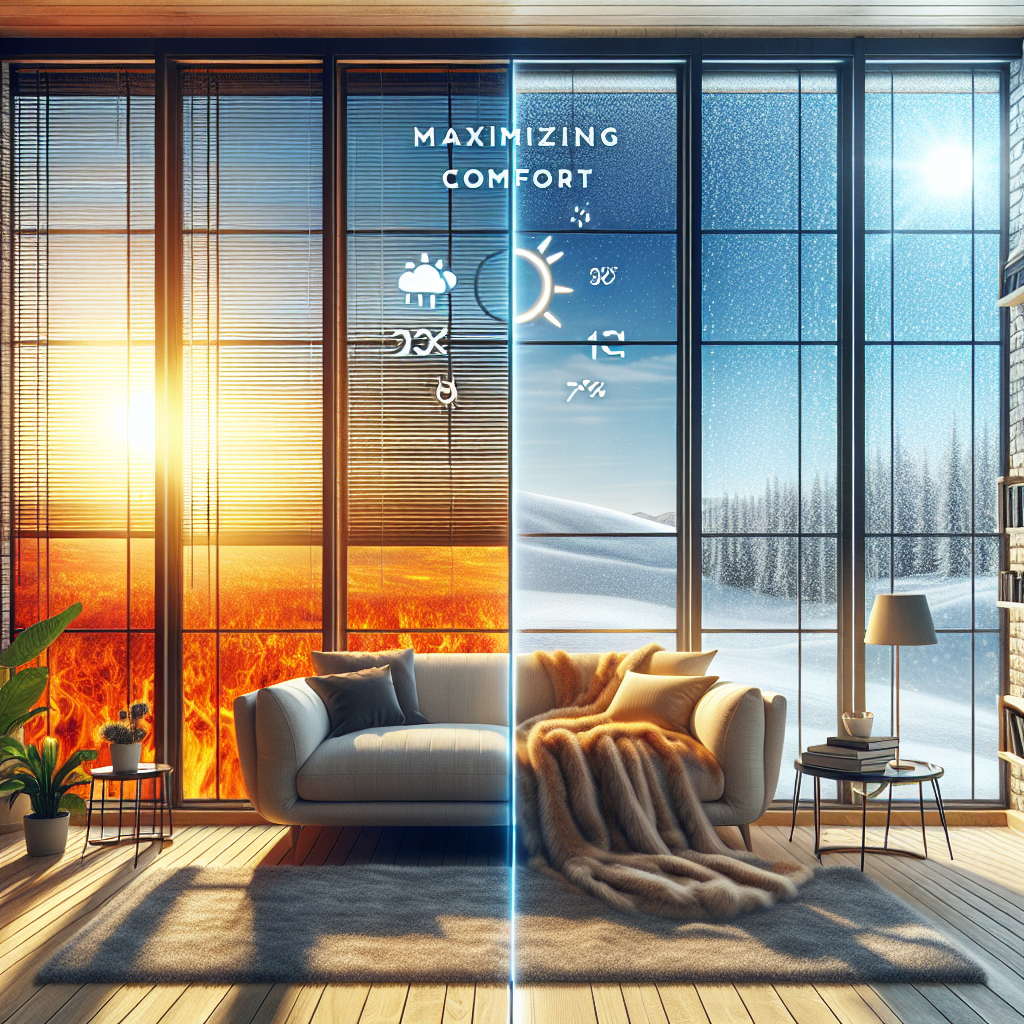When it comes to creating a comfortable indoor environment, we often think about heating, ventilation, and air conditioning (HVAC) systems. However, one crucial aspect that often flies under the radar is glazing—specifically, the type of windows and door glass used in our homes and buildings. Glazing plays a significant role in optimizing energy efficiency, regulating temperature, and ensuring visual comfort, irrespective of the weather outside. In this article, we will explore how glazing can maximize comfort across various weather conditions.
Understanding Glazing: What Is It and Why Does It Matter?
Glazing refers to the glass installed in windows, doors, and other openings in a structure. While it may seem like a simple component, glazing significantly affects a building’s overall comfort and energy performance. The type of glazing chosen can influence how much natural light enters a space, how much heat is retained or lost, and how much sound is transmitted. In essence, the right glazing can be a game-changer for achieving a cozy and energy-efficient living space.
Types of Glazing: The Building Blocks of Comfort
Not all glazing is created equal. Different types of glazing systems offer various benefits, depending on the weather conditions in your area. Here are some popular types:
-
Single Glazing: This consists of a single pane of glass. While it’s cost-effective, single glazing offers minimal insulation, making it less suitable for extreme weather conditions.
-
Double Glazing: Comprised of two glass panes separated by a spacer, double glazing provides better insulation and can significantly reduce heating and cooling costs.
-
Triple Glazing: Featuring three layers of glass, triple glazing offers even greater insulation, making it ideal for areas with harsh winters or extreme heat.
-
Low-E Glass: Low emissivity (Low-E) glass has a special coating that reflects heat back into the home during winter and keeps it out during summer. This type of glazing is particularly useful for maintaining a comfortable temperature.
- Tinted and Reflective Glass: This type reduces glare and heat gain from the sun, making it suitable for highly sunny climates.
Glazing and Temperature Regulation: A Comfort Connection
Temperature regulation is one of the primary roles of glazing in maximizing indoor comfort. Properly selected and installed glazing can minimize the effect of external temperatures on your indoor environment.
-
In Winter: Double or triple glazing acts as an insulating barrier that retains the warmth generated by heating systems. Low-E coatings can further enhance heat retention, ensuring you remain warm without cranking up the thermostat too high.
- In Summer: On the flip side, low-emissivity and reflective glass can help keep indoor spaces cooler. By rejecting solar heat, these glazing options allow for natural light without the added heat, making air conditioning systems more efficient.
Sound Insulation: Creating a Tranquil Sanctuary
In addition to temperature management, glazing also contributes to sound insulation. Living in bustling urban areas or near highways can lead to noise pollution, adversely affecting mental well-being and comfort.
- Acoustic Glazing: This form of double or triple glazing is designed to improve sound reduction significantly. By using thicker glass panes or specialized interlayers, acoustic glazing minimizes noise penetration, turning your home into a peaceful retreat regardless of what’s happening outside.
Glazing for Natural Light: A Bright Choice
Natural light can have a profound impact on mood and well-being. Well-placed and appropriate glazing types can enhance the natural light entering your home, which is especially beneficial during the gloomy winter months.
- Transom and Skylights: In addition to traditional windows, incorporating transom windows or skylights can flood your spaces with daylight without compromising your privacy. Consider Low-E glass options to provide sunlight while maintaining insulation.
Choosing the Right Glazing for Your Climate
The climatic conditions of your area should heavily influence your glazing choices. Here are some tips on selecting the best glazing types based on prevalent weather patterns:
-
Cold Climates: Opt for triple glazing or Low-E glass to maximize insulation.
-
Warm Climates: Reflective or tinted glass can mitigate heat gain.
- Variable Climates: Consider a mix of glazing options to suit both heating and cooling needs, such as energy-efficient double glazing.
Conclusion: A Step Towards Enhanced Comfort
Maximizing indoor comfort involves more than just the right furniture or décor; it’s about creating an environment that adapts to the changing seasons and weather conditions. Whether you face chilly winters or sweltering summers, the right glazing can make a significant difference in your comfort levels.
Investing in high-quality glazing options not only fosters a cozy atmosphere but also contributes to energy efficiency and sustainability. As we become increasingly conscious of our environmental footprint, making informed choices about our glazing is not just a matter of comfort—it’s a step towards a more sustainable future.
When planning your next home improvement or construction project, remember: the windows to your world can offer much more than just a view—they can provide a window into ultimate comfort!


